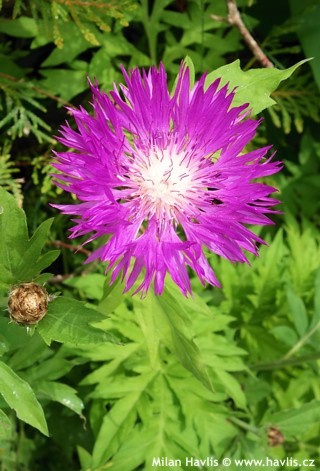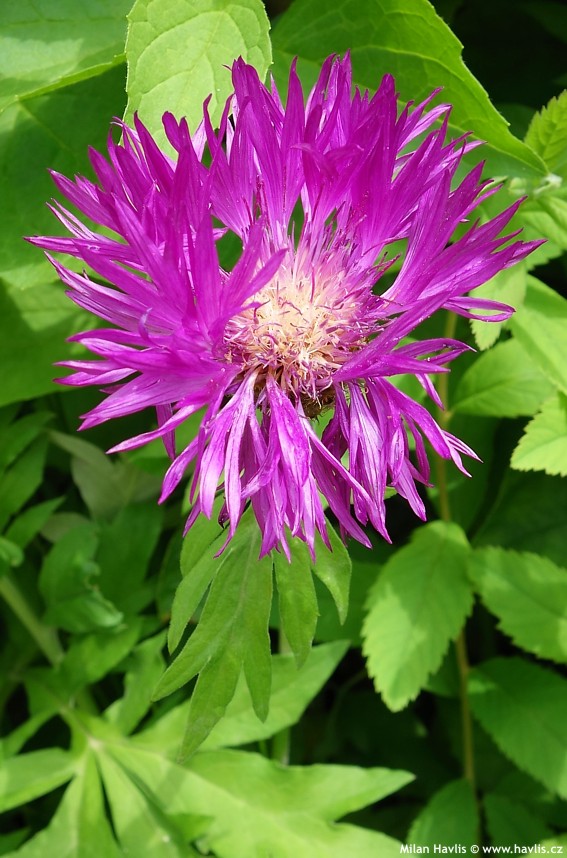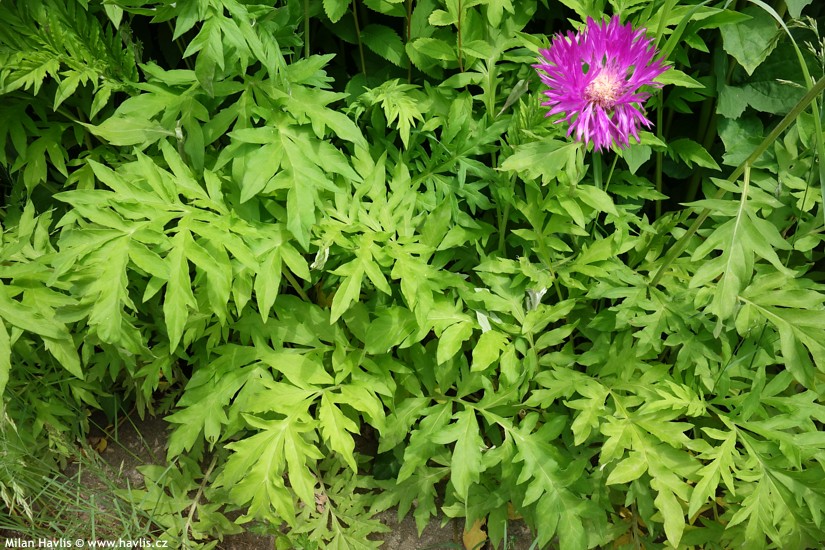Centaurea dealbata Persian cornflower, knapweed
size/type
low perennial,low perennial
usual height
0,3-0,4m
usual width
0,3-0,5m
leaves
deciduous broadleaf
colour of leaves
flowers
showy
colour of flowers
blooming time
May-June
location
full sun
USDA zone (lowest)
4 (down to -34°C)
winter protection
for zone 5+6

for zone 7

categorized
Centaurea
Cornflowers are popular cottage perennials of Czech and Slovak countryside. Its blue version is native to lower mountains of Šumava and Nové Hrady in the Czech Republic. I can understand that farmers are unhappy when its close relative cornflower (centaurea cyanus) weeds in their fields but looking at a blue mass of just blooming bluets is fantastic and brings us back to our childhood when we used to appreciate simple beauty of nature and its colours.Description of the plant:
Persian cornflower, also called knapweed, is a unique version of this beloved perennial with large, deep lilac pink flowers with creamy white centres. They open from late May atop about 30-40 cm stems if grown in full sun. But if they have to fight for sun with other taller plants close by they may rise up to some 70 cm. It makes a compact, bushy clump with attractive, fern-like, deeply dissected foliage of fresh green colour. Persian cornflower originates in Caucasus. Grow it in a sunny border in free-draining soil that is medium fertile and preferably evenly moist rather than dry on hot summer days. It can be cut back by about two thirds after flowering to encourage new foliage that will keep the plant attractive by the end of the season. Plants can be divided every 2-3 years in early spring or late autumn. Hardy to about -34°C (USDA zone 4)
Last update 02-07-2016
QUICK PRICE OVERVIEW
CURRENTLY SOLD OUT
















